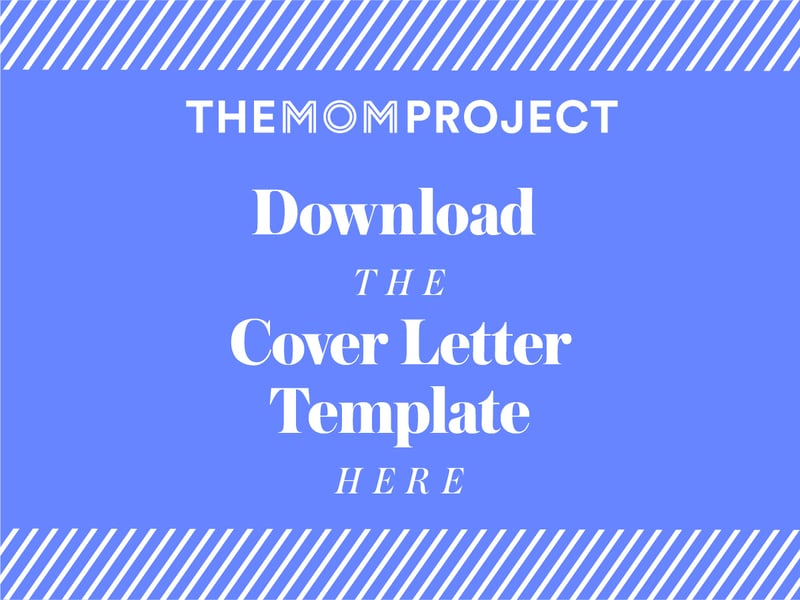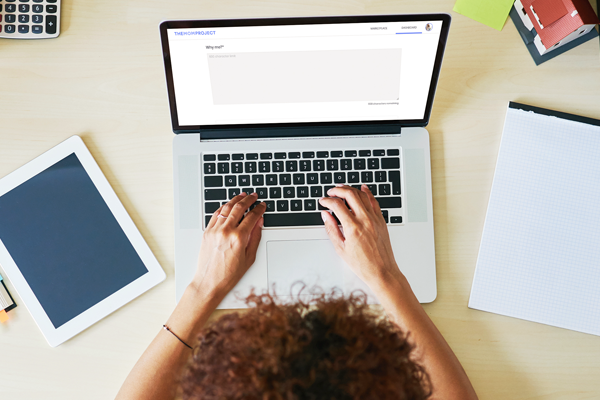Now that you’ve updated your resume and prepared your value portfolio to share in interviews, there’s one more step: writing an attention-grabbing cover letter. Just when you thought the hard work was done …
While your resume explains the “what” of your career experience, a cover letter is your opportunity to explain the “how” and “who” behind those amazing results. The goal is to convince the reader - usually the recruiter or hiring manager - that you’re the best fit for the job.
The secret is to do it quickly. You have less than 8 seconds to grab a recruiter’s attention. But no need to worry, we're here to help — our Cover Letter Template is designed to help you stand out and make those 8 seconds really count.
Download the Cover Letter Template and follow the tips below to get started!
⬇️ Download the Cover Letter Template
What to include in a cover letter
Attention-grabbing cover letters are the difference between your resume being flagged for follow-up or filed away indefinitely. The best cover letters all follow a very simple format: introduction, experience, matchmaking and a call-to-action.
Introduction
Open your letter by addressing the reader by name whenever possible. If the job listing doesn’t specify who to send a letter to directly, try using LinkedIn to discover the name of the hiring manager. If that doesn’t work, try to be as specific as possible with a greeting like:
- Dear [Department] Hiring Manager
- Dear [Department] Team
- Dear [Company Name]
Next, use your first paragraph to introduce yourself to the reader. Your "Why Me?" statement is a great framework for this. Make your introduction specific to the company and role you are applying for.
Include information like the title of the position, a brief description of who you are and your experience, and what makes you a good fit. If you heard about the position from a networking contact, be sure to include this referral in your introduction.
Experience
Use your second paragraph to share two to three specific accomplishments that relate to the job you are applying for. Your value portfolio is a great source to pull examples from.
Avoid simply restating the bullet points from your resume. Remember, your cover letter is a way to explain your experience in more detail than your resume. You can use this space to paint a picture for the reader about a challenge you overcame and the results you produced.
The examples you share should relate directly to the job’s requirements. Think about the skills the job you are applying for requires and select examples that demonstrate those skills in action. It’s okay if your experience is in a different industry. In fact, this letter is a great place to explain how your skills can be directly applied in this new role.
Matchmaking
In your next paragraph, it’s time to make it clear to the reader that you’re the best woman for the job. Focus on what makes you uniquely qualified for the role. Explain the specific value you bring to the role based on your experience, skills and approach.
This paragraph is also a great spot to address a career pause, especially a longer one. Simply acknowledge the skills you’ve been building (scheduling, organization, management, leadership) and express how they will directly benefit the company in this new role.
Call-to-action
Conclude your cover letter by stating your enthusiasm for the company and the position. Then, extend an invitation to connect rather than saying something passive like, “I look forward to hearing from you.” Instead, try “I’m available to discuss this position with you on the phone later this week.”
Tips for great cover letters
✔️ Address the recipient by name.
✔️ Customize your introduction and experience to the job.
✔️ Provided detailed information that’s different from your resume.
✔️ Include your contact information: email, phone number, and website if applicable.
✔️ Proofread, proofread, proofread.
Showcase your personality
Remember, your goal is to grab the recruiter’s attention in less than 8 seconds. When there are hundreds of letters crossing a recruiter’s inbox, you’ve got to make an impression quickly.
Your opening sentence should immediately convey your experience while also showcasing your personality. If you’re naturally a problem-solver and witty, give the recruiter a taste of that by acknowledging you’re the best fit to solve the company’s empty spot on their org chart by bringing X-Y-Z experience to the role.
If you’re wondering how far to push it with your personality, keep the tone of the job description in mind. Some industries are more open to fun, quirky statements. You can even write a few openers and pass them through a friend to review.
Final Tips
Every word counts so re-read each example and ask yourself if you can use a more specific or more action-oriented word. Beware of over-using common keywords. Instead of describing yourself as creative, can you say imaginative? Do you “invent” instead of “pivot”? Instead of project managing, can you say you “led a new initiative”?
Lastly, be sure to proofread your letter before sending it, even if you’ve sent the same version to another recruiter. Ask a friend to double check your work, too. It’s a simple step that can enhance a recruiter’s first impression. And as the saying goes, you never get a second chance to make a first impression.
Download the Cover Letter Template now
Find career opportunities with vetted, family-friendly companies
Join our talented community of moms and mom allies. Whether you’re searching for your next opportunity, looking to give or get career guidance or just getting started—you’re in the right place. 




